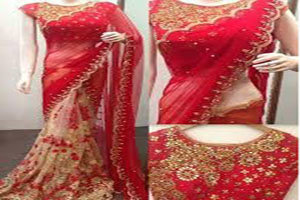
All designer, embroidered sarees or value added to attract 5 pc GST
YarnsandFibers News Bureau 2017-08-01 12:00:00 – New DelhiClearing the air over whether sarees will be treated as garments or fabric, the Central Board of Excise and Customs (CBEC) said that sarees are treated as fabric and it remains so even after embroidery etc as no new item emerges having a distinct name, character and use.
Hence, all designer, embroidered sarees or otherwise value added will attract a 5% goods and services tax. Infact, sarees, embroidered or not, would be taxed at the same rate at which the fabric is taxed, the CBEC explained.
It said 5 % GST is levied on job processes relating to the textile yarn (other than manmade fibre/filament) and fabrics.
With regard to dress materials, if sale value is not exceeding Rs 1,000, then a 5% GST will be levied and in cases where it exceeds Rs 1,000, a 12% GST will be charged.
According to set Goods and Services Tax Council rates, all categories of fabric attract a 5% rate. Manmade apparel up to Rs 1,000 will attract 5% tax and those above Rs 1,000, will attract 12%.
The CBEC, in connect to sale of old dhotis said that it would be treated as “worn clothing†and will be taxed as apparel based on sale value. As presumably the old cotton dhoti would be below the sale value of Rs 1,000 per piece, it would be taxed at 5%. With regard to new dhotis, tax rate will be 5%.
Market Intelligence
Ask for free sample Report

experience
Customer Base
dedicated team
Countries Served Worldwide









